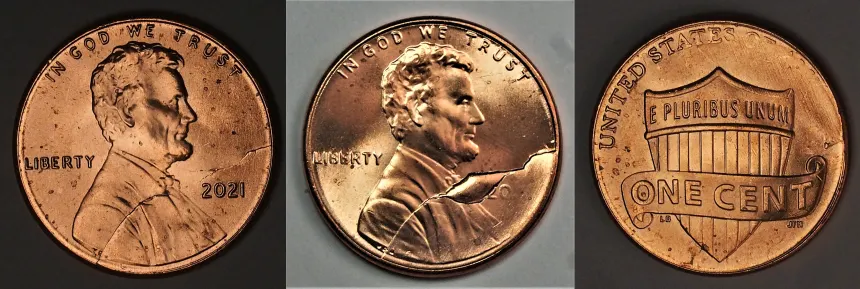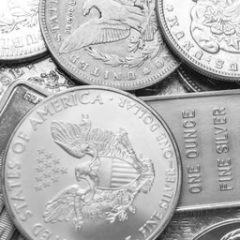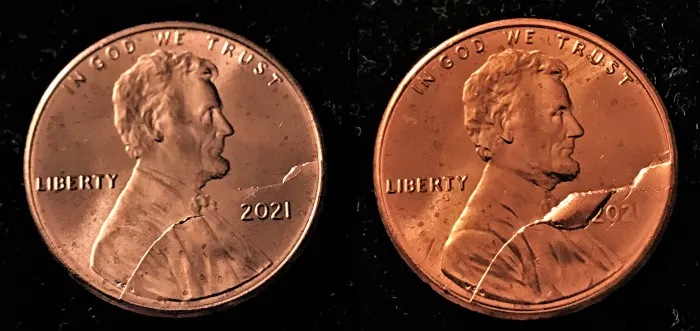
G.J. Lawson of Hampton, Va., didn’t have to go far to end 2021 by hitting the jackpot. He pulled a small quantity of pretty major Rim-To-Rim Die Break errors out of a local store from mid- to late November. As an error-variety coin dealer whose ads you can find in Numismatic News going back as far as the early 1970s, he’s used to having to purchase his inventory from coin suppliers – but this time all he had to do was look in his pocket change.
He found 18 of them at Harris Teeter Pharmacy. Because the cashier behind the counter was not authorized to sell or exchange any rolls of cents with him, he had to buy single packages of cheese and crackers, which after tax came out to 41 cents each, giving him a nickel and 4 cents in change each time he went back to buy more. It was the only way he could check out those cents. He believes the entire town is serviced by Brinks and that there could be many more of these errors to be found. That, of course, remains to be seen.
Lawson found them in two distinct die stages without and with a die break. The earlier stage is quite obvious, but the later stands out like a sore thumb.
Error specialist Robert Risi was also able to locate a small quantity of the variety, citing a recent purchase he made of 26 examples from a coin searcher who also got them out of Virginia. This batch included a total of four die stages, though the “major stages” are being treated as just a pair – with and without die break. He believes the variety will turn out to be rarer than Lawson seems to suggest.
Rarity is relative. If 100, even 200, of these got into a small town, then it is common to that town … at least until they all get found and dispersed among collectors all over the country. At that point, many errors like this disappear into the woodwork for decades and a mintage of 100-200 all of a sudden becomes minuscule and difficult to locate. Time will tell if they are rare or not.
The earliest stage of this error exhibits die cracks that extend inward from 3 o’clock and 7 o’clock connected together via a very minor, almost microscopic, hairline die crack extending from over the upper loop of the “2,” through Lincoln’s vest and finally connecting to the wider area of the ..
From: NumismaticNews

